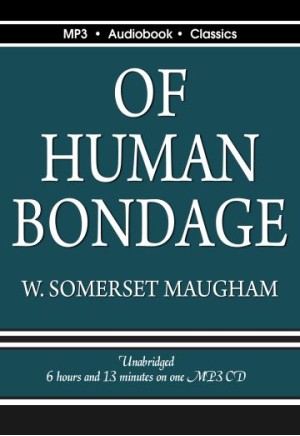| Track | Chapter | Length |
| 01 | 01 - Chapters 1 through 6 | 47:41 |
| 02 | 02 - Chapters 7 through 12 | 53:31 |
| 03 | 03 - Chapters 13 through 16 | 47:25 |
| 04 | 04 - Chapters 17 through 20 | 41:13 |
| 05 | 05 - Chapters 21 through 23 | 41:49 |
| 06 | 06 - Chapters 24 through 28 | 50:36 |
| 07 | 07 - Chapters 29 through 32 | 43:51 |
| 08 | 08 - Chapters 33 through 35 | 50:20 |
| 09 | 09 - Chapters 36 through 39 | 47:42 |
| 10 | 10 - Chapters 40 through 42 | 45:39 |
| 11 | 11 - Chapters 43 through 45 | 51:50 |
| 12 | 12 - Chapters 46 through 48 | 51:04 |
| 13 | 13 - Chapters 49 through 52 | 59:14 |
| 14 | 14 - Chapters 53 through 56 | 46:17 |
| 15 | 15 - Chapters 57 through 60 | 47:56 |
| 16 | 16 - Chapters 61 through 65 | 51:46 |
| 17 | 17 - Chapters 66 through 69 | 54:59 |
| 18 | 18 - Chapters 70 through 73 | 56:19 |
| 19 | 19 - Chapters 74 through 77 | 50:30 |
| 20 | 20 - Chapters 78 through 80 | 41:48 |
| 21 | 21 - Chapters 81 through 84 | 52:37 |
| 22 | 22 - Chapters 85 through 87 | 41:17 |
| 23 | 23 - Chapters 88 through 91 | 49:32 |
| 24 | 24 - Chapters 92 through 94 | 44:51 |
| 25 | 25 - Chapters 95 through 97 | 44:23 |
| 26 | 26 - Chapters 98 through 101 | 47:38 |
| 27 | 27 - Chapters 102 through 104 | 28:27 |
| 28 | 28 - Chapters 105 through 107 | 44:52 |
| 29 | 29 - Chapters 108 through 110 | 45:33 |
| 30 | 30 - Chapters 111 through 113 | 42:49 |
| 31 | 31 - Chapters 114 through 117 | 51:50 |
| 32 | 32 - Chapters 118 through 120 | 38:19 |
| 33 | 33 - Chapters 121 through 122 | 24:41 |
Production
Book Coordinator: Tom Weiss
Meta Coordinator: Laurie Anne Walden
Proof Listener: mim@can (1949-2017)
Artwork
Cover: Cover design based on 1936 hardcover edition from Doubleday & Co.
Inset: Portrait of William Somerset Maugham, May 26, 1934, by Carl Van Vechten.
Insert: Caricature of British novelist W. Somerset Maugham. New York Public Library Archives, Historical and Public Figures Collection
The phrase W. Somerset Maugham used as the title for Of Human Bondage comes from Part IV of Spinoza’s Ethics, “Of Human Bondage, or the Strength of the Emotions”, which treats the general inability of people to control their emotions, and thus constitutes a type of bondage. He goes on to connect beliefs to emotions of pleasure and pain and how desires evolve into plans and outcomes. That central theme runs through the life arc of Philip Carey, a character based in part on Maugham. Orphaned at age nine and afflicted with a club foot, he is taken in by an aunt and emotionally remote uncle and soon shunted off to a boarding school. We follow his evolution through his youth, education, his awkward first loves, his difficulties in finding a vocational fit, and the heartbreaks and disappointments he encounters in his quest for meaning. Maugham dissects the confusion and dissonance of being simultaneously attracted to and repulsed by people, objects, thoughts and events with surgical precision and cool detachment. His descriptions reveal an artist’s eye and his conversations have a musician’s ear for pitch, tone and timbre. The result is a depiction of the complexity and ambivalence of living in the changing environment of the modern world that Theodore Dreiser called a work of genius and compared to a Beethoven symphony. It is no surprise that the Modern Library included Of Human Bondage at number 66 on its list of the 100 best English-language novels of the 20th Century.
Play sample:
Download a PDF datasheet
| Item Info | |
| EAN - DVD case | 0701236969849 |
| EAN - CD jacket | 0686175924411 |
| Media | MP3 CD |
| Package | DVD box |
| Author | W. Somerset Maugham (1874 - 1965) |
| Year | 1915 |
| Recording | |
| Read by | Tom Weiss |
| Length | 25 hours and 38 minutes |
| Type of Reading | Solo |
Of Human Bondage
- Author: MP3 Audiobook Classics
- Product Code: DB-2009
- Availability: In Stock
-
$14.99
Available Options
Tags: Of Human Bondage






